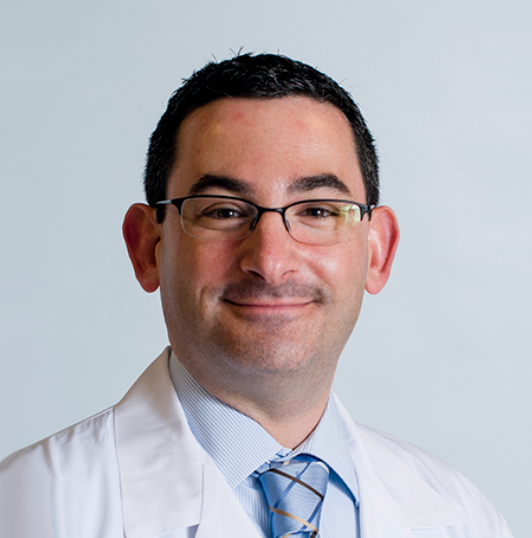Liso-Cel Achieves Durable Response in R/R/ B-Cell Lymphoma
Lisocabtagene maraleucel treatment in patients with relapsed or refractory B-cell lymphoma achieves long-lasting responses, study shows.
Jeremy Abramson, MD

In the phase 1 TRANSCEND NHL 001 study (NCT02631044), lisocabtagene maraleucel (liso-cel; Breyanzi) lead to durable, efficacious responses in a population of patients with relapsed/refractory large B-cell lymphomas (LBCLs), according to a presentation at the ASH Annual Meeting 2021.
Findings from the study indicated that patients treated with liso-cel had a probability of continued response at 2-years of 49.5% (95% CI, 41.4%-57.0%) with a median follow-up of 23.0 months (95% CI, 22.8-23.1). Patients had a median duration of response (DOR) of 23.1 months (95% CI, 8.6–not reached). Notably, no patients relapsed after 23 months in the trial.
“Liso-cel was associated with low incidence of CRS and neurologic events and few AEs occurred after the 90-day treatment-emergent period. No new safety signals were reported during long-term follow-up,” according to Jeremy Abramson, MD, director of the Jon and Jo Ann Hagler Center for Lymphoma at Massachusetts General Hospital and associate professor of medicine at Harvard Medical School, during a presentation on the findings
A previous analysis of the TRANSCEND trial indicated that liso-cel yielded a high overall response rate (ORR) of 73%, including a complete response (CR) rate of 53%. The CAR T-cell therapy was found to have a low incidence of severe cytokine release syndrome (CRS) and neurologic adverse effects (AEs).
In order to eligible for the trial, patients needed to be aged 18 years or older and have previously received 2 or more lines of therapy. Prior treatment with autologous and allogeneic hemopoietic stem cell transplant was allowed. Additionally, patients were required to have an ECOG performance status of 0 to 2. Secondary central nervous system (CNS) lymphoma was allowed.
Following a lymphodepleting regimen consisting of 30 mg/m2 of fludarabine and 300 mg/m2 of cyclophosphamide for 3 days, patients received 1 or 3 dose levels of liso-cel: 50 x 106, 100 x 106, and 150 x 106 CAR T cells. A total of 127 patients received the confirmation dose of 100 x 106 CAR T cells.
The trial’s primary end points were safety and ORR by independent review committee, with key secondary end points including CR rate by independent review committee, DOR, progression-free survival (PFS), overall survival (OS), and pharmacokinetic profile.
In the safety analysis set, 270 patients received 1 or more doses of liso-cel, and in the efficacy evaluable set, 257 patients with confirmed PET-positive disease were treated with 1 or more doses of liso-cel.
The median patient age was 63 years, with 41% of patients being 65 years of age or older and 10% were 75 years or older. Three percent of patients had secondary CNS lymphoma and 67% of patients were chemotherapy refractory. Forty-four percent of patients on the study had never achieved a CR. Additionally, patients received a median of 3 prior lines of therapy. The trial had a median follow-up of 19.9 months.
Additional findings from the study indicated that patients had a probability of PFS at 2-years of 40.6% (95% CI, 34.0%-47.2%) at a median follow-up of 23.9 months (95% CI, 23.7-24.0). Moreover, the median PFS was 6.8 months (95% CI, 3.3-12.7). At 27 months in the PFS curve, investigators noted that 1 patient died due to sepsis who had an ongoing CR at the time of last response with no progressive disease.
Moreover, patients had a probability of OS at 2-years of 50.5% (95% CI, 44.1-56.5%) and a median follow-up of 29.3 months (95% CI, 26.2-30.4). The median overall survival was 27.3 months (95% CI, 16.2-45.6). Three deaths were reported after 45 months, with 2 patients experiencing deaths to unknown causes at 45 and 48 months, respectively. Additionally, 1 patient died at 46 months due to disease progression. At 24 months, CAR _cell persistence was 37%, indicating that CAR-T cells were present in peripheral blood for up to 48 months following infusion.
In terms of safety, the most common any grade AEs within 90 days of infusion were neutropenia (63%), anemia (48%), and fatigue (44%) and grade 3 or higher AEs included neutropenia (60%), anemia (37%), and thrombocytopenia (27%). From 91 days to the end of study, the most common any grade AEs included neutropenia (8%), anemia (8%), and fatigue (7%) and grade 3 or higher AEs included neutropenia (7%), anemia (6%), thrombocytopenia (4%), and febrile neutropenia (4%).
When assessing AEs of special interest, investigators reported an incidence of any grade and grade 3/4 CRS of 42% and 2%, respectively. The median time to onset was 9 days and the median time to resolution was 11 days. Additionally, the incidence of any grade and grade 3 or higher neurologic AEs were 30% and 10%, respectively. The median time to onset and resolution were 9 and 11 days, respectively.
The majority of CRS and neurologic toxicities were grade 1/2, with no reports of grade 5 toxicities. Patients with prolonged cytopenia with laboratory results past day 29, recovery of grade 2 or less anemia, thrombocytopenia, and neutropenia were reported at a median of 26, 35, and 25.5 days, respectively.
Few deaths were reported due to AEs during the study and no patients were found to die due to contracting COVID-19. 9 deaths occurred 30 days or less following infusion, 24 occurred less than 30 days to 90 days or more, and 100 deaths were reported over 90 days later.
Reference
Abramson JS, Lia M, Palomba L, et al. Two-year follow-up of Transcend NHL 001, a multicenter phase 1 study of lisocabtagene maraleucel (liso-cel) in relapsed or refractory (R/R) large B-cell lymphomas (LBCL). 2021 American Society of Hematology Annual Meeting and Exposition; December 11-14, 2021; Atlanta, GA. Abstract 2840.
Examining the Non-Hodgkin Lymphoma Treatment Paradigm
July 15th 2022In season 3, episode 6 of Targeted Talks, Yazan Samhouri, MD, discusses the exciting new agents for the treatment of non-Hodgkin lymphoma, the clinical trials that support their use, and hopes for the future of treatment.
Listen